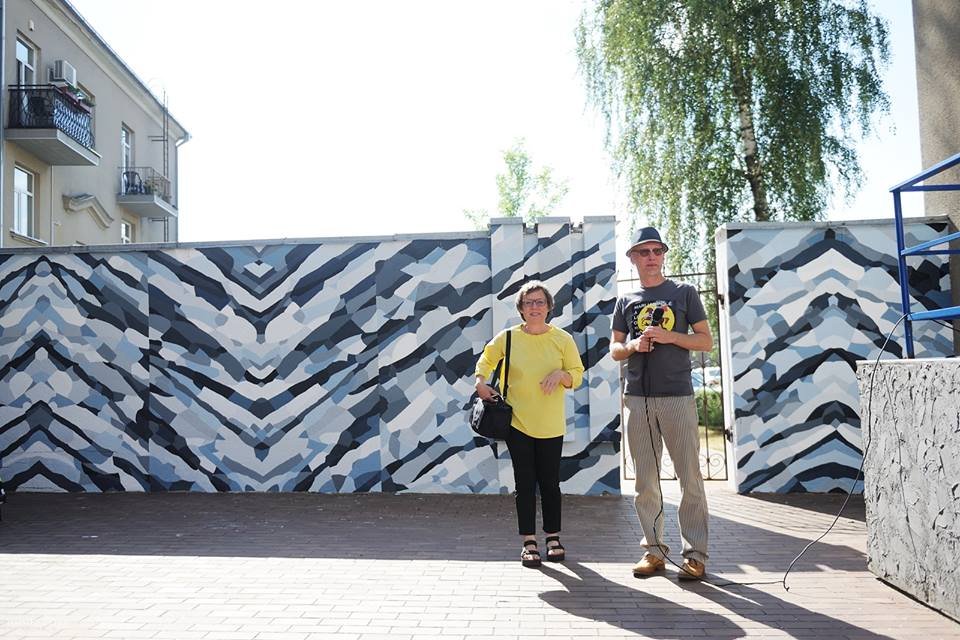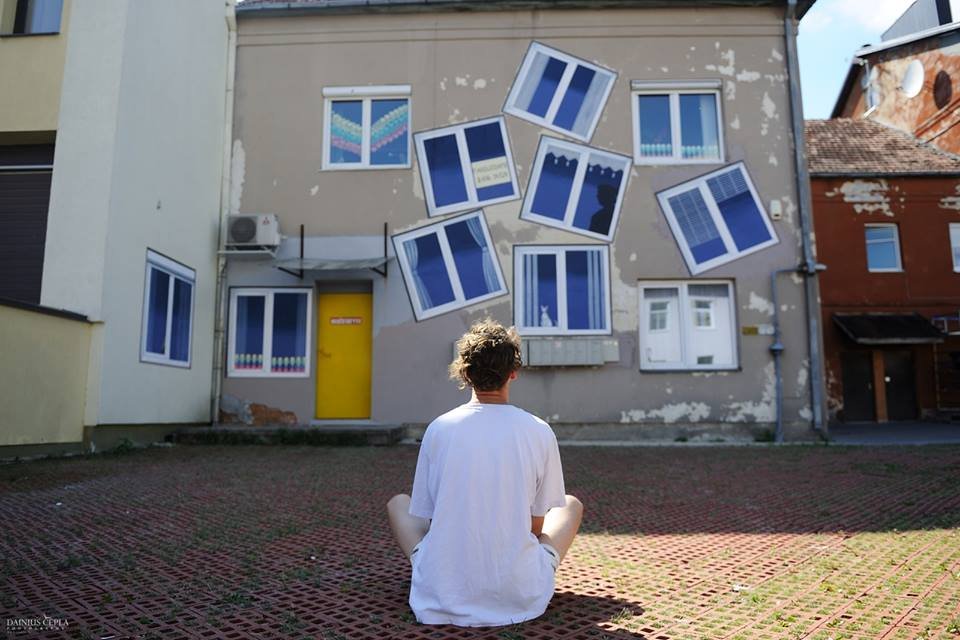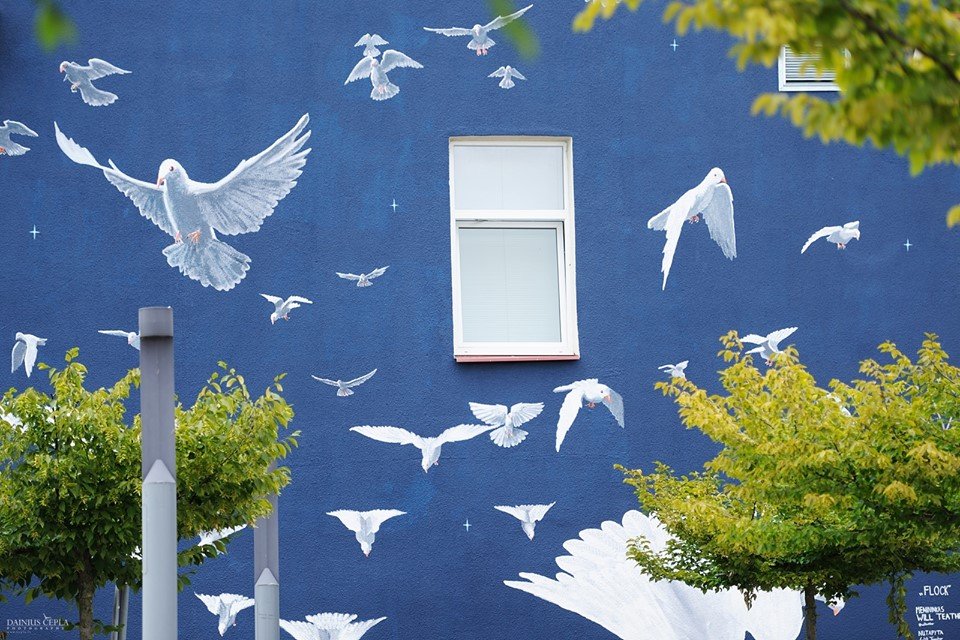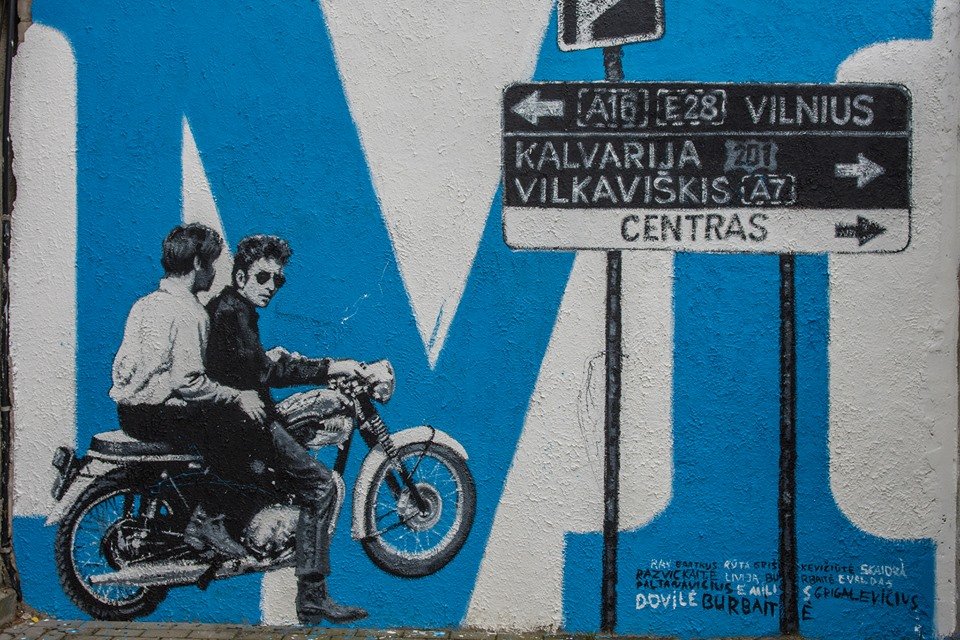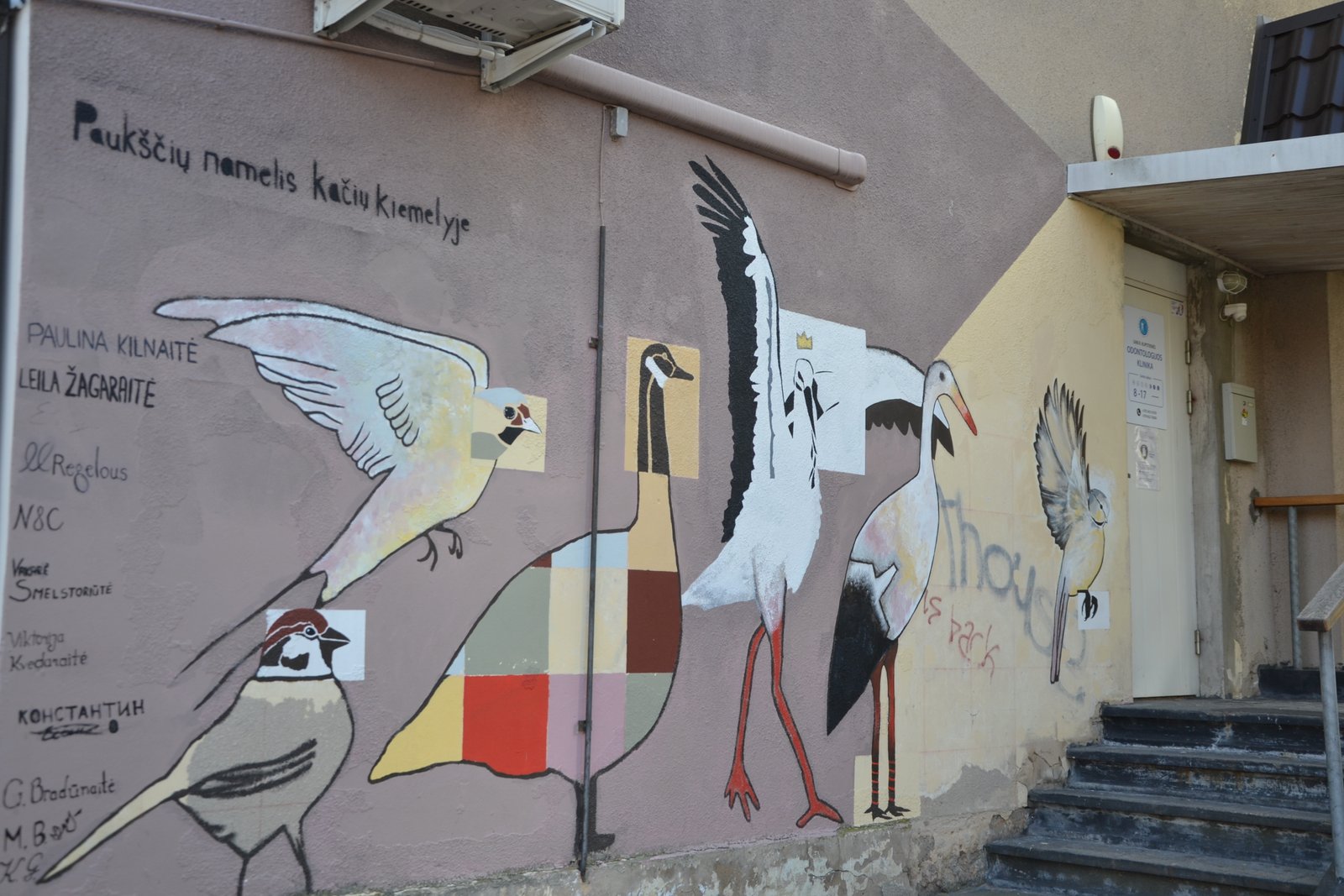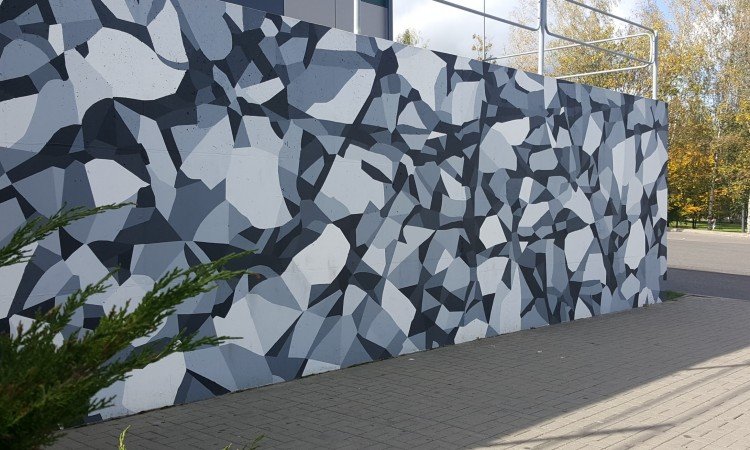Do what you can’t
This palyboard symbolizes a well-known play " Snakeladder". The drawing has been improved with the details of computer games and many other items inviting to break the rules of the game. The drawing depicts the hereos of the play who are the symbols of two different sides of the behaviour: a good and a bad one. A little person hanging on a dice and playing according to the rules of the game, loses. Wherereas, a skeleton, breaking the rules of the game, rises upwards till the end of the game. Namely this understanding symbolizes the title of the game "Do what you can't (Lith. Daryk tai, kas negalima)". The picture is drawn on the wall of a school building and depicts the idea of contemporary often riotuos youth which constatntly breaks the rules and does what is not allowed.


